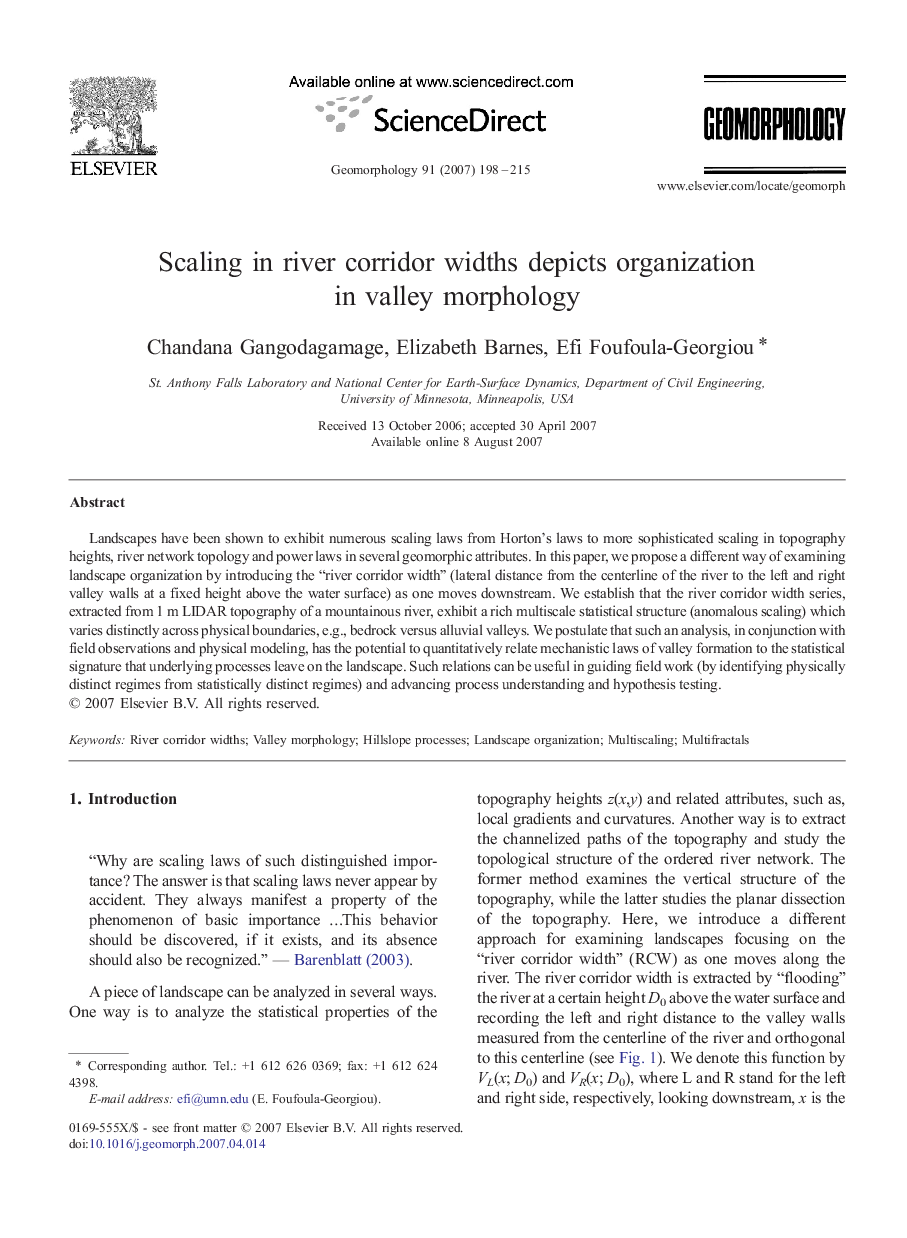| Article ID | Journal | Published Year | Pages | File Type |
|---|---|---|---|---|
| 4687114 | Geomorphology | 2007 | 18 Pages |
Landscapes have been shown to exhibit numerous scaling laws from Horton's laws to more sophisticated scaling in topography heights, river network topology and power laws in several geomorphic attributes. In this paper, we propose a different way of examining landscape organization by introducing the “river corridor width” (lateral distance from the centerline of the river to the left and right valley walls at a fixed height above the water surface) as one moves downstream. We establish that the river corridor width series, extracted from 1 m LIDAR topography of a mountainous river, exhibit a rich multiscale statistical structure (anomalous scaling) which varies distinctly across physical boundaries, e.g., bedrock versus alluvial valleys. We postulate that such an analysis, in conjunction with field observations and physical modeling, has the potential to quantitatively relate mechanistic laws of valley formation to the statistical signature that underlying processes leave on the landscape. Such relations can be useful in guiding field work (by identifying physically distinct regimes from statistically distinct regimes) and advancing process understanding and hypothesis testing.
